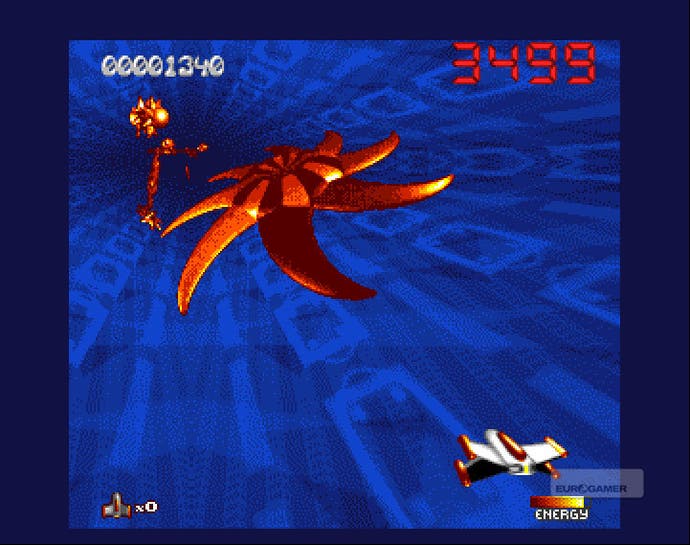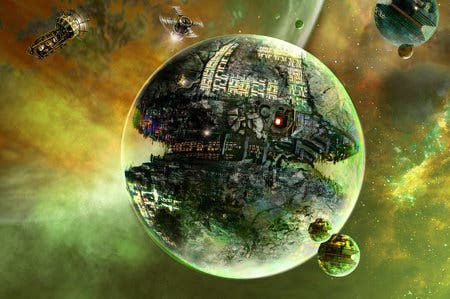Retrospective: Stardust
Rock blockin' beats.
"It's a gamer's game."
You've heard that one before. A game, made by gamers, for gamers. A proper game.
Sounds perfect. But doesn't this apply to every game? Surely all game developers are gamers at heart, who enjoy playing titles created by their peers? I assumed so, but having interviewed a fair few developers over the years, I'm surprised at how many claim that they don't actually play others people's games. I recently met a well-known coder who's been making games for almost 30 years and he told me that the last game he played to any degree was Tomb Raider, in 1996. He said he had neither the time nor inclination these days.
One developer I interviewed who certainly doesn't follow that trend is Harri Tikkanen. Harri is co-founder of Housemarque, the Finnish development studio best known for the recent Super Stardust games on PlayStation 3, PSP and now PS Vita. Yet the series actually predates the PlayStation brand itself, with the first Stardust game debuting on the Commodore Amiga in 1993.
Harri was Stardust's chief coder and designer, leading a small, talented team that was active in the Amiga demo scene. Given their background, it's hardly surprising that their first commercial offering was a technically brilliant showcase title designed to push the aging Amiga hardware to its limits.

Stardust was Asteroids on steroids. There were already Asteroids clones on the Amiga - the machine's vast PD library was littered with them - yet Stardust looked like a game arriving from the future rather than one dragged from the past. It was among the first titles to make full use of ray-tracing, resulting in animated graphics that simply popped off the screen. The asteroids, in particular, looked brilliant as they slowly spun into view before being blasted into smaller and smaller chunks by your tiny ship.
The production and presentation was top notch throughout. And of course everything was accompanied by that requisite of 90's shooters - a ravey "let's av it!" dance soundtrack that thumped away as you played. Stardust's music was familiar but better than most, becoming faster and more frantic as the on-screen action escalated to frankly ridiculous levels.
In addition to the main shooting stages, the game boasted a couple of extra sections designed to show off some technical tricks. The first was a parallax-scrolling underwater section where you used Thrust-style controls to guide your ship through a series of tricky caverns in search of useful upgrades. It was the second one, however, that really dropped jaws. The famous warp sequence saw you hurtling along a 3D tunnel with obstacles and enemies whizzing towards you. It was a stunning effect and instantly became something Amiga owners used to demonstrate the graphical grunt of their computer. Even console kids were impressed.

Such is the sequence's impact, Harri reveals that he still gets emails from people asking how he managed it. He's tight-lipped when answering though, referring to it as merely a 'simple trick'. Even developers of the day were baffled. Graftgold's Andrew Braybrook took a look at the code and determined that it was indeed a fairly straightforward technique involving a series of animated screens that were twice as large as the Amiga's display. But like all the good tricks, perhaps we shouldn't strip away the magic by revealing the secret.
Despite the hocus-pocus on show, Stardust was much more than fancy tech demo. It took the classic gameplay of Asteroids and enhanced it by adding pick-ups, multiple weapons, dozens of different alien craft and big, silly end-of-level bosses. It was undeniably fun to play and the only thing that really spoilt it was the difficulty level.
The game was just too hard, even in the early stages. The team clearly fell into that common trap of ramping up the difficulty, as they'd been playing it for hours every day during development and assumed it was too easy. Your ship did have invincibility shields and smart bombs which were useful for escaping tight spots, yet the chief adversary in many stages was not the on-screen hazards but the ticking clock of doom in the corner. Each stage had to be cleared within a time limit that was sometimes horribly tight. You couldn't afford to be cautious - you had to attack from the get-go.

If you did somehow manage to complete all 33 stages, the end credits revealed a rather sweet surprise. No, not 'greetz' to fellow sceners, but rather a list of the team's favourite Amiga games and the programmers who made them, including Another World (Eric Chahi), Frontier: Elite II (David Braben) and Stunt Car Racer (Geoff Crammond). It's clear that it was these classic titles, and their celebrated authors, that inspired Harri and the Stardust team to produce such a clever and confident debut.
Stardust was released as a mid-price title in late 1993. It reviewed well in all the mags but completely failed to trouble to sales charts. Regardless, the game was ported to the PC and Atari ST, and an Amiga sequel, Super Stardust, arrived the following year. The follow-up was essentially an update designed specifically for the newer AGA Amigas. The graphics were even more polished and the difficulty level was a touch less severe. It was later ported to the Amiga CD32 and PC.
Having lay dormant for more than a decade, the Stardust series triumphantly returned on the PlayStation Network in June 2007. Super Stardust HD emerged as a twin-stick shooter of sheer bloody excellence that ran at a blistering 1080p/60FPS. It was the first must-have title on PSN and is still one for best games available for the service. The PSP version was less successful as the game didn't really suit the console's controls. Such problems shouldn't affect the imminent PS Vita launch title, Super Stardust Delta, which is looking like a snug fit for the new Sony handheld.
If you're unfamiliar with the original Stardust then hopefully this feature will encourage you to dig it out. And should you do that, you'll discover a game made with skill, passion and humour; a true gamer's game.

